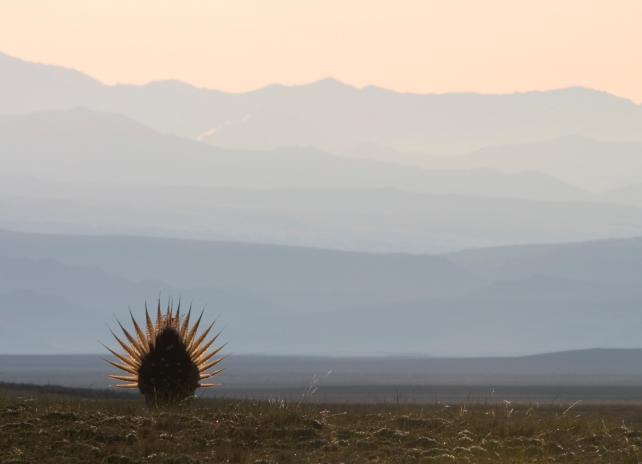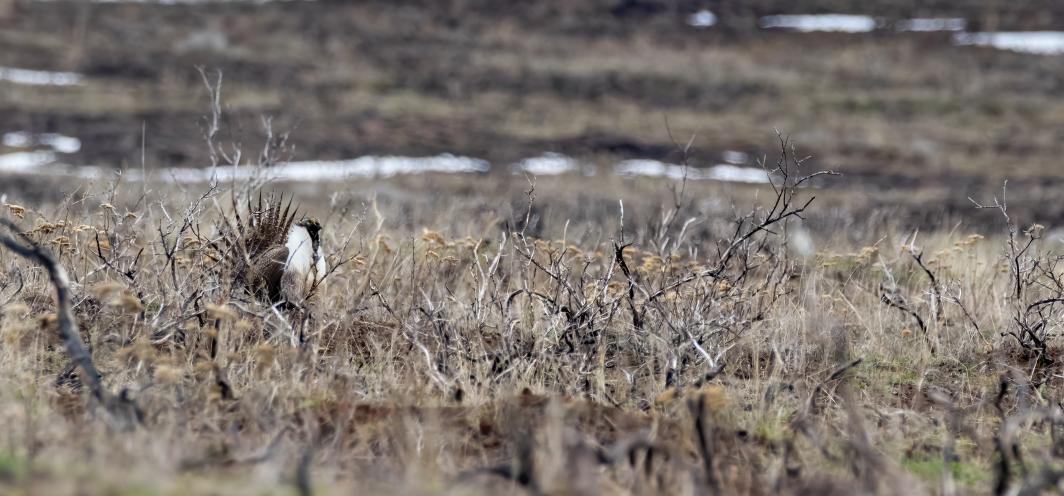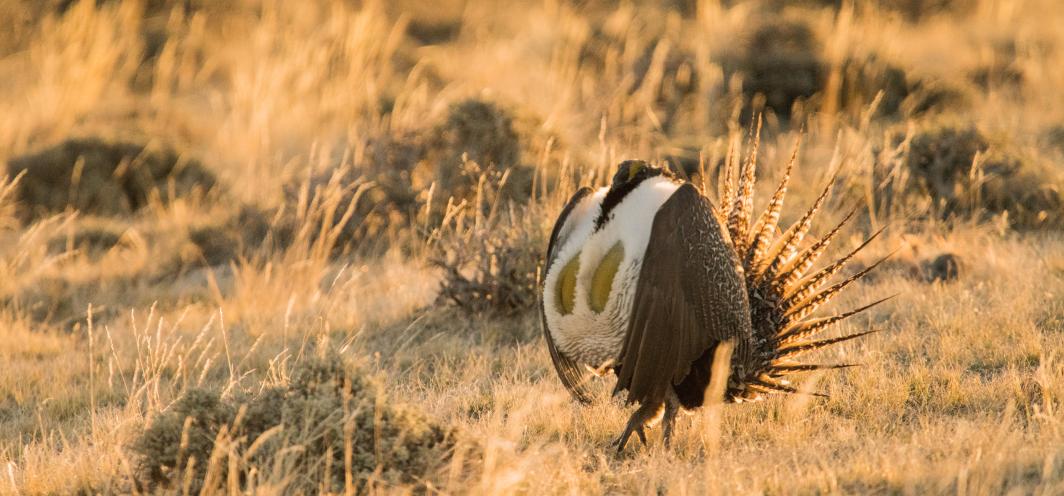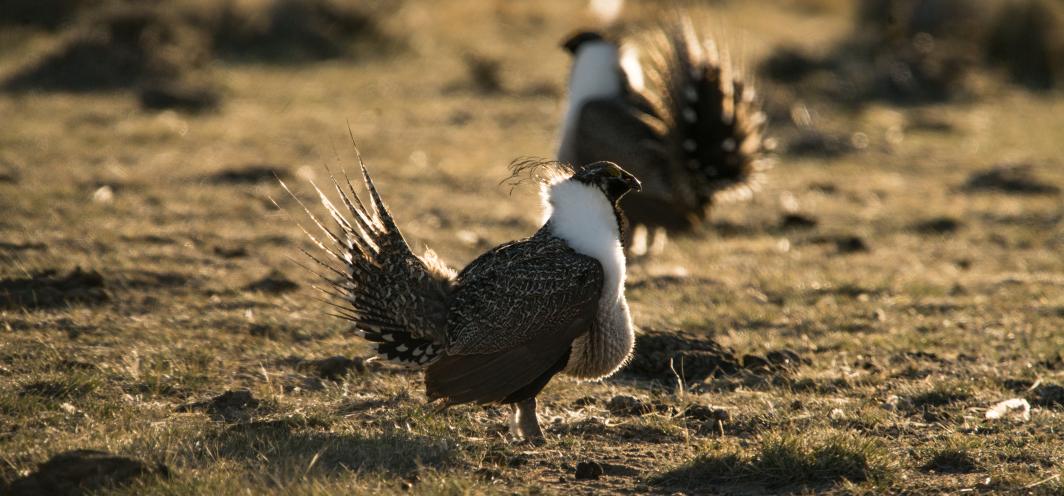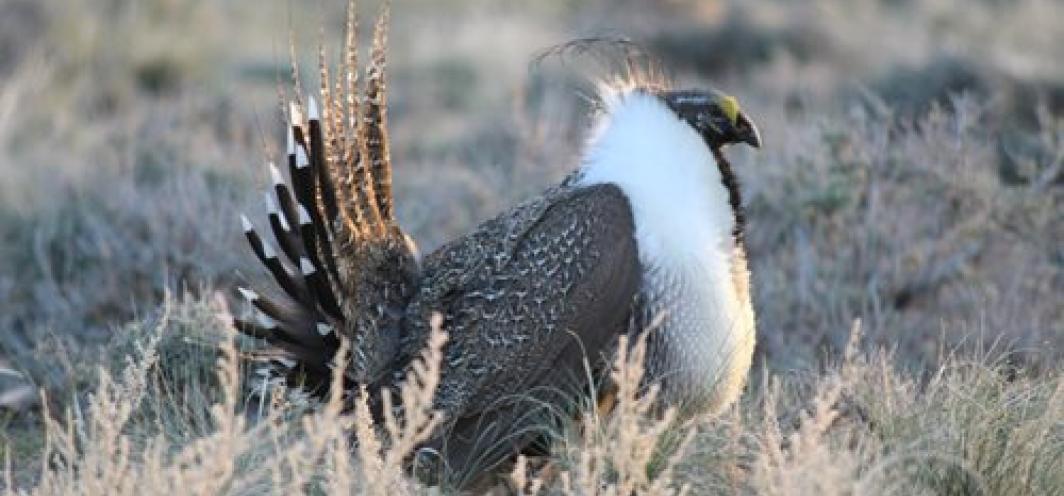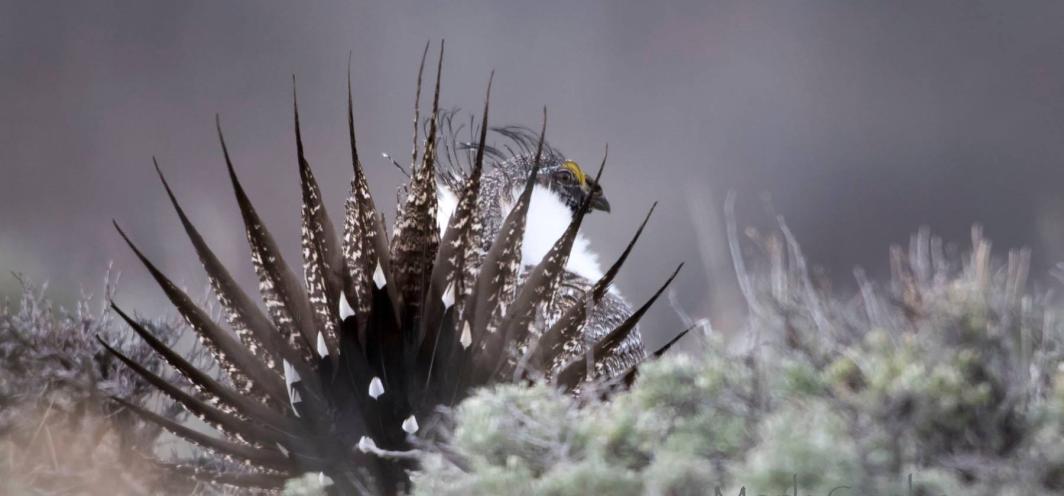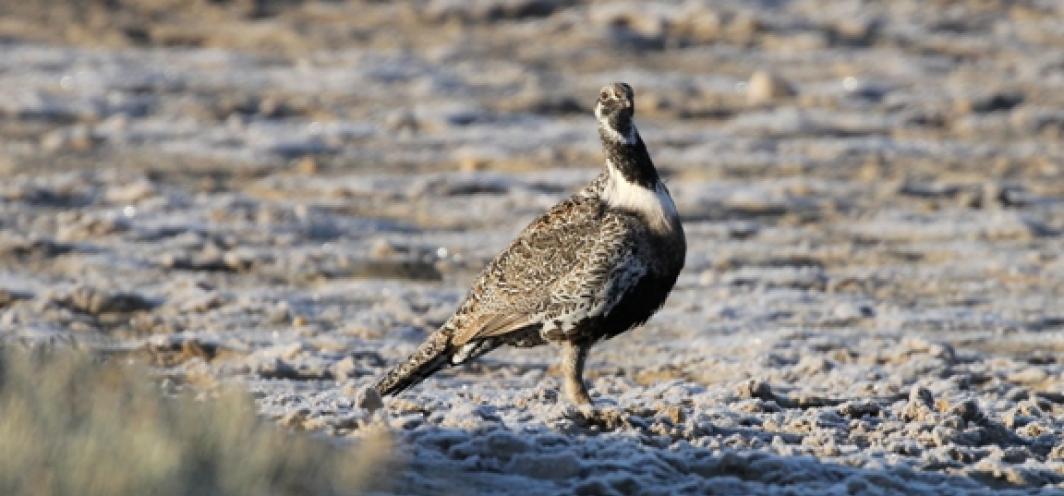Density Disturbance Calculation Tool
DDCT is a spatially based application that calculates the number of disruptive activities averaged per square mile and the percentage surface disturbance within the DDCT assessment area.
Sage-Grouse Implementation Team
The Sage-Grouse Implementation Team (SGIT) is comprised of representatives from State and Federal agencies, industry, and non-governmental organizations.
Density Disturbance Calculation Tool
The Density and Disturbance Calculation Tool (DDCT) is a spatially based application that calculates the number of disruptive activities averaged per square mile and the percentage surface disturbance within the DDCT assessment area. Proponents of surface-disturbing activities in sage-grouse core areas must submit their project footprints through this tool to complete their permitting process.
Exception requests for seasonal timing limitation stipulations may be submitted via the DDCT or can be submitted to wgfd.hpp@wyo.gov using this form.
If you have technical questions about using the DDCT application, please contact the GIS DDCT Support team at 307-757-0408 or via email at WGF-one-steppe-admin@wyo.gov
If you have questions about the policy or biology that underlies the DDCT process, please call the Habitat Protection Program at 307-777-4506 or email us at wgfd.hpp@wyo.gov
-
Answer
Go to the Step-by-step Guide to the DDCT.
-
Answer
You can upload a zipped shapefile of your project into the Natural Resource and Energy Explorer (NREX) to determine where your project is in relation to Sage Grouse Core Areas.
Please keep in mind that the Sage-Grouse Executive Order applies to Non-Core Population Areas. NREX can also be used to determine if your project is within the buffer of a non-Core lek.
-
Answer
The Sage Grouse Executive Order does have some limitations with regards to Non-Core Population Areas. Uploading a shapefile of your project to the Natural Resource and Energy Explorer (NREX) tool will help you to determine if your project is within the 2-mile timing stipulation buffer of a non-Core lek, or the .25-mile No Surface Occupancy buffer of a non-Core lek.
-
Answer
Generally speaking, a Wyoming state agency that will be issuing a permit for your project will let you know when you need to enter it into the DDCT application. If you have additional questions, please contact the Habitat Protection Program at wgfd.hpp@wyo.gov.
-
Answer
The definition of which projects are De Minimis is outlined in Appendix G of the 2019 Sage Grouse Executive Order. If after reading Appendix G you still aren’t sure, please contact the Habitat Protection Program at wgfd.hpp@wyo.gov.
Sage-Grouse Implementation Team
The Sage-Grouse Implementation Team (SGIT) is comprised of representatives from State and Federal agencies, industry, and non-governmental organizations. Governor Gordon has appointed the SGIT members, and they work collaboratively to protect the Greater Sage-Grouse under the State of Wyoming's Sage-Grouse Executive Order (2019-3).
Sage-grouse Core Area Proposed Revisions:
Interactive map
View the interactive map of existing sage-grouse core areas with SGIT subcommittee proposal revisions (Final Draft).
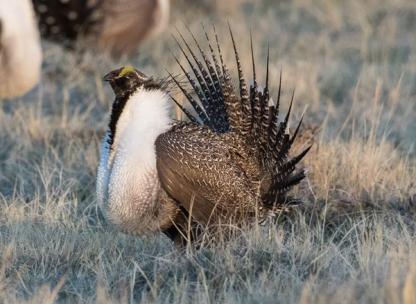
SGIT Meeting
Sage-Grouse Implementation Team Meeting
Thursday, January 8, 2026
Start time at 10 AM
Wyoming Game and Fish Department - Headquarters
5400 Bishop Blvd.
Cheyenne, WY 82006
No Virtual Option will be available.
Tentative Agenda (order and items subject to change)
- BLM Sage-Grouse RMP Amendment Update
- SGIT Adaptive Management Update
- Conversation about Executive Order Updates
- Stewardship Area Update
- Operator Offered Mitigation - OSLI Rule Development

